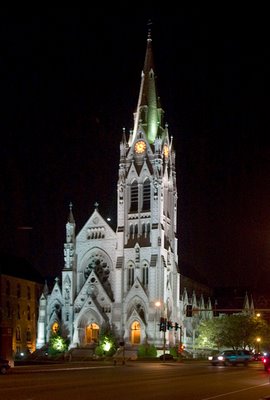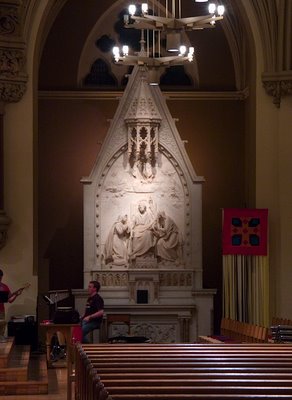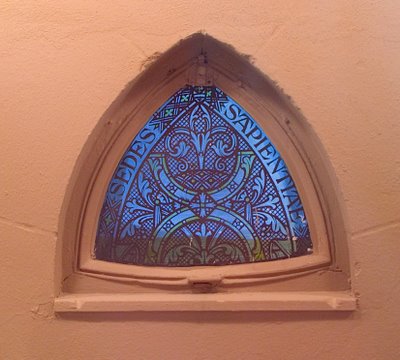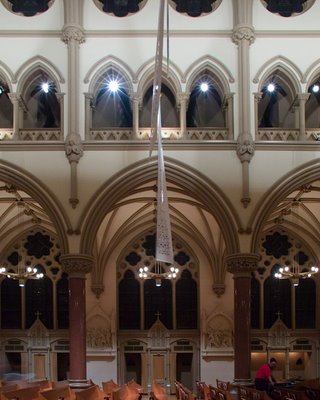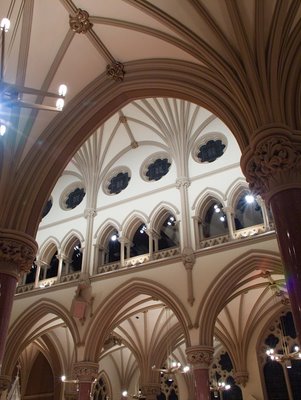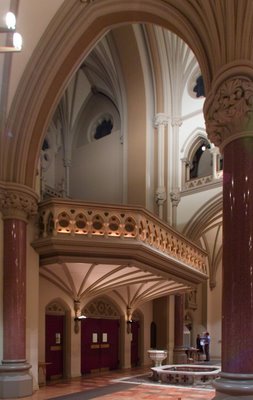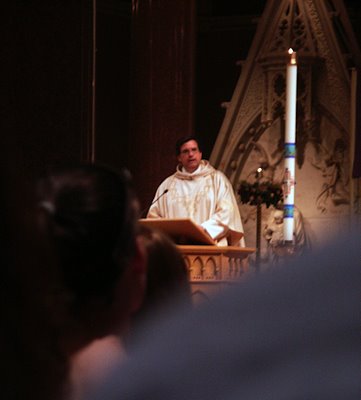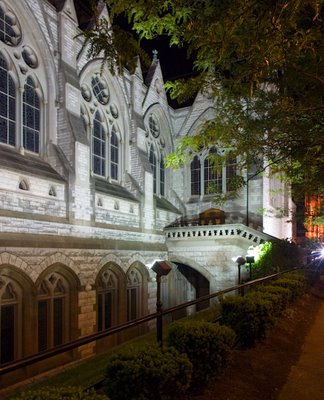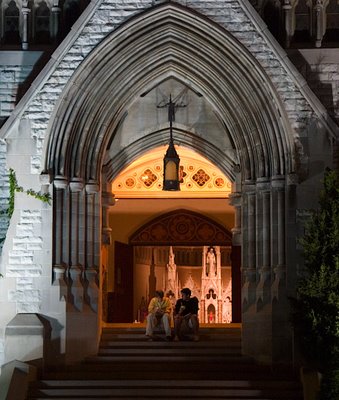
http://www.cyberbotics.com
But use this for good, not evil. Christians aren't supposed to be mad scientists.

And Mary said:
“My soul proclaims the greatness of the Lord;
my spirit rejoices in God my Savior,
for he has looked with favor on his lowly servant.
From this day all generations will call me blessed:
the Almighty has done great things for me,
and holy is his Name.



The beginnings of art, architecture, and philosophy are lost in the mists of time; but to be human is to do these things. Everywhere in the world and in every era we can find objects of art, buildings, and writings of some sort, but in this course of study we limit our examination to the Western tradition as has been passed down to us through the ages. Although the roots of this tradition are lost, we do know that the Western tradition comes most directly from the Greeks, who wrote things down, and whose many writings exist to this day. And the Greeks studied in Egypt, so we should look there for roots of the tradition.Egypt was "the happiest, healthiest, and most religious nation of the world", and greatly influenced the tradition:
The lessons of Egypt were not lost on the latter Greeks and Romans; these nations were not blessed with the natural stability of the Nile, but instead hoped to duplicate the success of Egypt by art instead of by nature. How can a society ensure happiness and stability? Obtaining the good of both individuals and of society is the great project of the Western tradition, and this goal is embodied in the Western arts tradition.Next I describe the influence of Pythagoras, who started classical Western education in mathematics:
But Pythagoras was on to something new and more demonstrably true. His notion that nature was governed by numbers seems almost obvious now, especially to someone trained in the sciences or engineering. His studies of the musical scales and astronomy led him to believe that much of the cosmos could be described in terms of ratios of small numbers, and that certain ratios predominate: particularly those that have pleasing musical sounds. He thought that phenomena could be described by rhythm and cycles. While a stringed musical instrument can have an infinite number of possible lengths of strings, only certain ratios of lengths between strings sound harmonious; likewise, the orbits of the planets are not arbitrary, but have a simple harmonic ratio between them, and these, remarkably, are the same ratios that make harmonious music.Next I describe some of the pleasing musical ratios found in the arts and nature:
This is not a wild or mystical idea, nor is it just a coincidence; for modern engineers and scientists often use linear mathematics and harmonic analysis to approximate real-life systems. Systems that operate linearly [harmoniously] will be stable and predictable; and nonlinear systems will often settle down into linear systems via frictional losses. Harmonious physical systems are indeed 'pleasing', like music.
An occultist may think that all of these ratios make up a kind of 'Sacred Geometry' appropriate only for mystical structures, while a skeptic may think that these ratios are merely changeable social convention, and that a modern artist should not be bound to them. I take the traditional view: there seems to be some geometric or mathematical necessity behind these ratios, pointing to the truth; we may not now understand why they are important, but we should take them very seriously.—Grand Tradition
The ancients did not know why certain ratios were desirable, but they certainly found evidence in nature and in mathematics that these ratios had a basic truth.


After Paul's escorts had taken him to Athens, they came away with instructions for Silas and Timothy to join him as soon as possible.Athens was then a part of the Roman Empire, but it was once a proud independent city-state, and for over four hundred years was a major university town, with famous schools started by Plato and Aristotle; the Roman elite would send their boys to Athens to get a good education.
While Paul was waiting for them in Athens, he grew exasperated at the sight of the city full of idols.Of course, Paul hated the idols, and there were thousands of them, but how did he treat the pagans? We have to read on....
So he debated in the synagogue with the Jews and with the worshipers, and daily in the public square with whoever happened to be there.At this time, the Jews were everywhere in the Empire, Christianity spread quickly through the synagogues, but the majority of the population were pagans.
Even some of the Epicurean and Stoic philosophers engaged him in discussion. Some asked, "What is this scavenger trying to say?" Others said, "He sounds like a promoter of foreign deities," because he was preaching about 'Jesus' and 'Resurrection.'
They took him and led him to the Areopagus and said, "May we learn what this new teaching is that you speak of? For you bring some strange notions to our ears; we should like to know what these things mean." Now all the Athenians as well as the foreigners residing there used their time for nothing else but telling or hearing something new.The Areopagus, or Hill of Ares (Mars) was the place of the trial of Socrates, who could not believe in any of the official gods of Athens, but who instead taught about the God, who was the source of all Good. He was the only person ever executed in Athens for this crime.
Then Paul stood up at the Areopagus and said: "You Athenians, I see that in every respect you are very religious.The King James version substitutes 'superstitious' for 'religious', which kind of poisons the story, making Paul a bit less pastoral. The Greek says literally 'reverent to gods'.
For as I walked around looking carefully at your shrines, I even discovered an altar inscribed, "To an Unknown God." What therefore you unknowingly worship, I proclaim to you."To an Unknown God"! While these altars were originally set up as placeholders, to placate any god which had been missed in their rituals, there was a later view of these as being altars to the One God, unknown to the pagan priests, but being known to the philosophers as the creator and the source of all good. In ancient Greece, the priests and philosophers were enemies. In Christendom, the priests are philosophers.
The God who made the world and all that is in it, the Lord of heaven and earth, does not dwell in sanctuaries made by human hands, nor is he served by human hands because he needs anything. Rather it is he who gives to everyone life and breath and everything. He made from one the whole human race to dwell on the entire surface of the earth, and he fixed the ordered seasons and the boundaries of their regions, so that people might seek God, even perhaps grope for him and find him, though indeed he is not far from any one of us.Paul here speaks directly to the Stoics, who would have found nothing wrong in these statements. Instead of condeming the Greeks as idolators, worthy of Hell, instead he praises their natural, rational religion as containing a part of the truth. That is good pastoralism.
For 'In him we live and move and have our being,' as even some of your poets have said, 'For we too are his offspring.'Paul is quoting a Stoic here.
Since therefore we are the offspring of God, we ought not to think that the divinity is like an image fashioned from gold, silver, or stone by human art and imagination. God has overlooked the times of ignorance, but now he demands that all people everywhere repent because he has established a day on which he will 'judge the world with justice' through a man he has appointed, and he has provided confirmation for all by raising him from the dead."Here Paul says that God forgives their idolatries, due to ignorance, but the time is coming where we all will be judged. This idea of justice would have been appreciated by the Stoics.
When they heard about resurrection of the dead, some began to scoff, but others said, "We should like to hear you on this some other time." And so Paul left them. But some did join him, and became believers. Among them were Dionysius, a member of the Court of the Areopagus, a woman named Damaris, and others with them.Paul's preaching worked, especially with the Stoics. Paul seemed to make a distinction between true and false philosophy.
After this he left Athens and went to Corinth.
The story begins in the early 1900s, in the rolling hills of Sussex, a rural county in southeast England. A laborer, digging at Barkham Manor near the village of Piltdown, unearthed a strange piece of skull. He's reported to have passed it on to Charles Dawson, a local amateur archaeologist. Dawson later claimed he noticed that the skull was extremely thick and appeared rather primitive. This would be the first in a series of discoveries at Piltdown.When a new scientific theory develops, scientists go out seeking evidence that either supports or refutes the claim of the theory: for the theory of evolution, a 'missing link' was needed. Some were found, but none yet in England:
They would transform and pervert scientists' understanding of the origins of man for decades. Charles Darwin's theory of evolution had been published just 50 years before, in 1859.
In his Origin of Species, Darwin presented evidence that all living things descended from a common ancestry. Through a process of mutation, adaptation, failure and success, he claimed that all life on earth today, including man, is the result of millions of years of evolution. It was a revolutionary idea.
Then in Germany, quarrymen working in the Neander Valley, made a remarkable find: strange bones, skeletal remains that resembled humans, but not those of any living humans. The creature was named "Neanderthal" and Germany the birthplace of early man.Why was this important? In 1871 Charles Darwin published The Descent of Man which argued that some races of men were more highly evolved than others. Although he thought that all races were of the same species, it was natural that the more advanced races would soon eliminate their uncivilized competitors. Darwin's cousin and supporter, Francis Galton, started the eugenics movement, to help strengthen the race; the development of these ideas from mere description to actual policy led to Planned Parenthood and the Nazi extermination camps.
But soon evidence of early man was being found in France and Spain as well. To their annoyance, the British had none.
The 1920s brought a revolution to Mexico, along with the widespread persecution of Catholics.Source
Missionaries were expelled from the country, Catholic seminaries and schools were closed, and the Church was forbidden to own property. Priests and laymen were told to denounce Jesus and their faith in public; if they refused, they faced not just punishment but torture and death.
During this time of oppression and cruelty, the Knights of Columbus did not retreat in Mexico but grew dramatically, from 400 members in 1918 to 43 councils and 6,000 members just five years later. In the United States at the time, the Knights handed out five million pamphlets that described the brutality of the Mexican government toward Catholics. As a result, the Mexican government greatly feared and eventually outlawed the Order.
Thousands of men, many of whom were Knights, would not bow to these threats or renounce their faith, and they often paid with their lives. They took a stand when that was the most difficult thing they could do, and their courage and devotion have echoed down through the decades.
The culmination of this historic season is found in the world première of Requiem for St. Louis by our composer-in-residence, Sasha Johnson Manning. This large-scale work has been eight years in the making, and its completed performance has been eagerly anticipated by critics and audiences alike. To round off our 'golden jubilee' the Chorus also presents the three Fest- und Gedenksprüche, written for double choir by Johannes Brahms.
Requiem aeternam dona eis, Domine.
Et lux perpetua luceat eis.
Te decet hymnus, Deus, in Sion,
Et tibi reddetur votum in Jerusalem
Exaudi orationem meam
Ad te omnis caro veniet.
Requiem aeternam dona defunctis, Domine.
Et lux perpetua luceat eis.
Requiem aeternam dona eis, Domine
Et lux perpetua eis.
Eternal rest give unto them, O Lord
And let perpetual light shine upon them
A hymn, O God, becometh Thee in Zion
And a vow shall be paid to thee in Jerusalem
Hear my prayer
All flesh shall come before you
Eternal rest give unto the dead, O Lord
And let perpetual light shine upon them
Eternal rest give unto them, O Lord
And let perpetual light shine upon them.


The religious left is back.The terms "conservative" and "liberal" are political terms and should have no place in religious matters. "Orthodox" and "heterdox" are better terms. This is a carefully organized political action, and its base philosophical beliefs are far from traditional Christianity; although the same could be said for much of conservative religious activism.
Long overshadowed by the Christian right, religious liberals across a wide swath of denominations are engaged today in their most intensive bout of political organizing and alliance-building since the civil rights and anti-Vietnam War movements of the 1960s, according to scholars, politicians and clergy members.
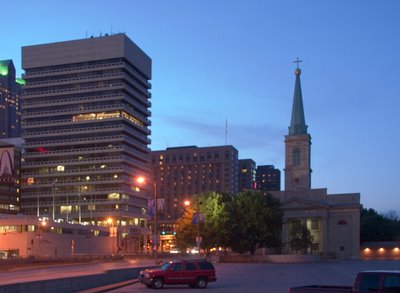


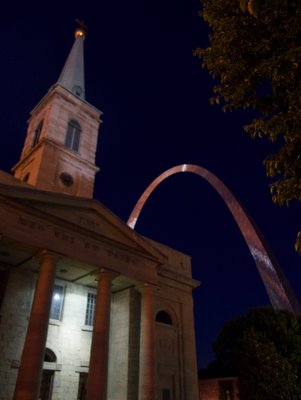
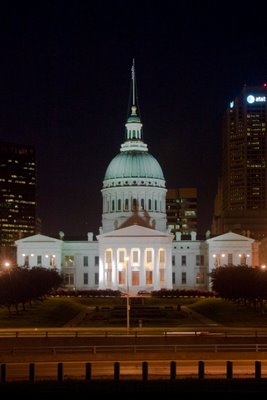
"The Church - as I wrote in the Encyclical 'Deus caritas est' - aims 'to contribute to the purification of reason and to the reawakening of those moral forces without which just structures are neither established nor prove effective in the long run.'Social Justice is a phrase that used to make my stomach turn, filling my mind with images of red Marxist banners, feminist witches, and angry shouting mobs, leading to extreme edicts being passed down by the Supreme Courts.
The pope concluded his message by calling them to "perform your 'direct duty to work for a just ordering of society,' because 'charity must animate the entire lives of the lay faithful and therefore also their political activity, lived as social charity'."
The term "social justice" was coined by the Jesuit Luigi Taparelli in the 1840s, based on the teachings of Thomas Aquinas. He wrote extensively in his journal Civiltà Cattolica, engaging both capitalist and socialist theories from a Catholic natural law viewpoint. His basic premise was that the rival economic theories, based on subjective Cartesian thinking, undermined the unity of society present in Thomistic metaphysics; neither the liberal capitalists nor the communists concerned themselves with public moral philosophy. Pope Leo XIII, who studied under Taparelli, published in 1891 the encyclical, Rerum Novarum (On the Condition of the Working Classes), rejecting both socialism and capitalism, while defending labor unions and private property. He stated that society should be based on cooperation and not class conflict and competition. The encyclical Quadragesimo Anno (On the Restoration of Social Order) of 1931 by Pope Pius XI, encourages a living wage, subsidiarity, and teaches that social justice is a personal virtue: society can be just only if individuals are just.I feel that I can quote freely from this article section, because I wrote it.
Pope Benedict XVI's encyclical Deus Caritas Est (God is Love) of 2006 teaches that social justice is the central concern of politics, and not of the church, which has charity as its central social concern. The laity has the specific responsibility of pursuing social justice in civil society. The church's active role in social justice should be to inform the debate, using reason and natural law, and also by providing moral and spiritual formation for those involved in politics.
The official Catholic doctrine on social justice can be found in the book Compendium of the Social Doctrine of the Church, published in 2004 and updated in 2006, by the Pontifical Council Iustitia et Pax.
Monsignor Richard Stika of the Archdiocese of St. Louis is fueling an effort to raise money in St. Louis to restore the childhood home of the late Cardinal Joseph Ritter.Msgr. Stika, Episcopal Vicar of the Archdiocese, is a board member of the Cardinal Ritter Birthplace Foundation, which states:
Ritter's boyhood home in New Albany, Ind., was built in the late 19th century and is located next to his family's bakery. Ritter died in 1967 after becoming a cardinal in 1960.
The house saw a generation of Ritter children grow up to be three doctors, a nun, a businessman, and, of course, the youngest (and only Hoosier) Cardinal in Catholic church history.[Note to Saint Louis readers—'Hoosier' here means someone from Indiana.]
Without having the power to tax or having anything to sell, he managed to raise 125 million dollars in the 1950s for new construction in St. Louis. He oversaw the building of 42 new parishes, 16 high schools, and a Catholic teaching and research hospital for children.Sadly, times of great wealth in the Church often turn out to be times of moral decline, as we have seen in Renaissance, and in the 1950s and 1960s. Cardinal Ritter was part of the reform wing of the Second Vatican Council, and is noted for being the first American bishop to say Mass in the vernacular.

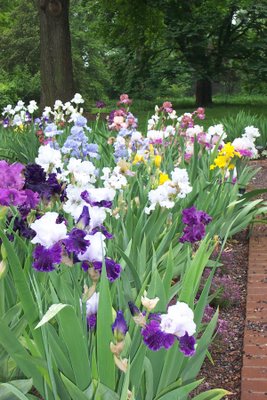


Not so long ago, kids raided their parents' liquor cabinet when they wanted a quick high.From 1992 to 2003, the numbers of younger teenagers who abuse prescription drugs have doubled. But lest we think that this new abuse is just limited to otherwise legal, but illicitly used, drugs:
Today, it's the medicine cabinet.
They're stocking up for "pharming parties," get-togethers sans parents where teens barter legal drugs and get high.
Compared with the rest of their peers, teens who abuse prescription drugs are ...Not all of this is done illegally.
-Twice as likely to use alcohol
-5 times likelier to use marijuana
-12 times likelier to use heroin
-15 times likelier to use Ecstasy
-21 times likelier to use cocaine
Indeed, some kids come by the drugs legally. Maybe they're taking Ritalin for attention deficit disorder or painkillers after losing their wisdom teeth or breaking a bone.I've met teenagers who tell me that they abuse attention deficit drugs, and some seek out prescriptions even if they don't legitimately need it, or attempt to keep prescriptions long after they are no longer needed. Also, having ADD or ADHD is now seen as being fashionable.
In our quick-fix world, kids see adults, who'd never touch an illegal drug, fill prescriptions to treat everything from physical pain to anxiety. Meanwhile, pharmaceutical companies via TV and magazines hype drugs that promise a happier, thinner, more energetic you, all by popping a pill.This is an old excuse for drug abuse. I remember it being used in the 1960s: hippies would blame their marijuana use on their parents' use of Valium. This seems to be a use of the common "Tu Quoque" (Latin: 'you're another') fallacy, where someone blames an accuser of the same fault. While it does allege hypocrisy, it also serves to encourage that same behavior: if an authority does it, it must be right. This is the same type of argument used in the priestly sex-abuse crisis: the mainstream media simultaneously accuse Catholic priests of abuse while also pushing for greater sexual freedom and a lowering of the age of consent.
(CNSNews.com) - Before being sworn in as president, Democrat Bill Clinton was told that he should "start immediately to eliminate the barely educated, unhealthy and poor segment of the country." Clinton received the advice in a letter from an advocate for the abortion drug regimen RU-486, which the president promoted during his first official act in the White House, according to a new report.This letter, written by the former husband of the pro-abortion attorney who argued Roe v. Wade, included:
"Our survival depends upon our developing a population where everyone contributes," he wrote. "We don't need more cannon fodder. We don't need more parishioners. We don't need more cheap labor. We don't need more babies."We don't need more parishoners? Parishoners? And who goes to a parish? Hm.
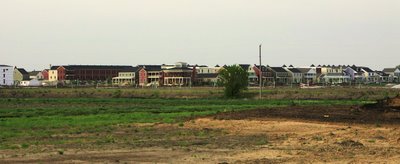





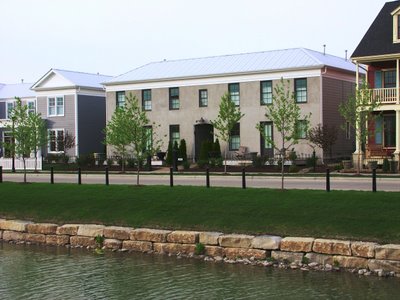

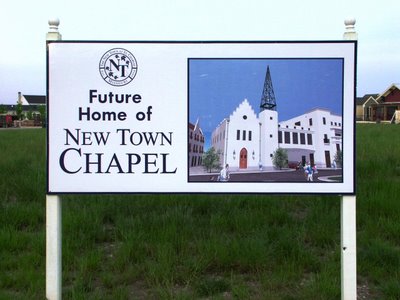
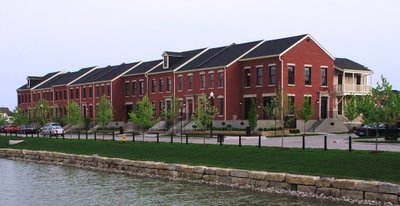



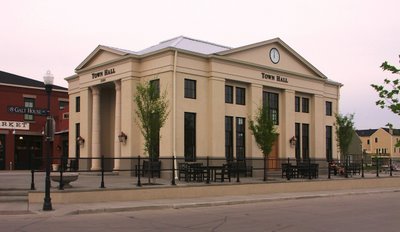
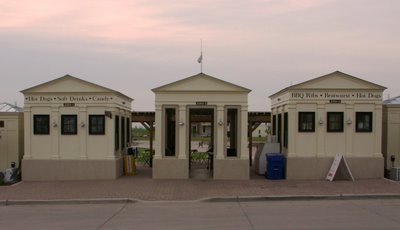

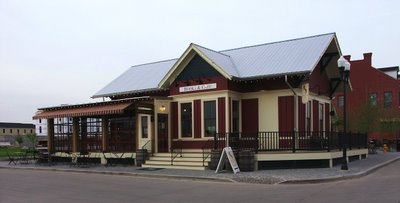
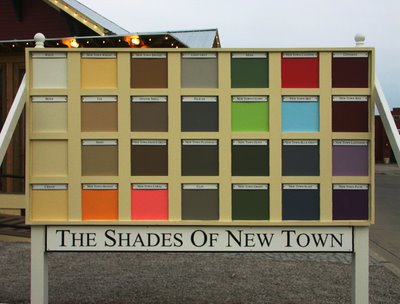

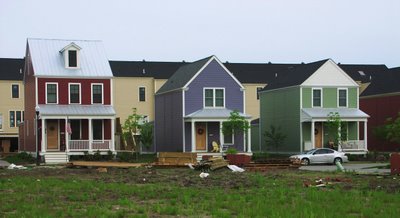

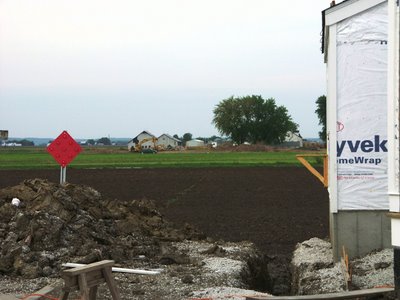
"Kansas City, not St. Louis, is the largest city in the state of Missouri, although admittedly the St. Louis metro area is larger, but this is because it includes older, and more established surrounding counties. Unlike St. Louis, Kansas City has been named in numerous surveys as one of the nation's most livable cities; and Kansas City recently ranked higher than St. Louis in Kiplinger's "Smart Places to Live" survey. Kansas City also has more affordable housing and lower business costs than St. Louis. And even if St. Louis calls itself the "Gateway to the West", Kansas City's Westport has much pioneer history also. Although St. Louis has more corporate headquarters, Kansas City is less dependent on smokestack industries. Kansas City is also a beautiful city, with its wide boulevards, and many fountains, while St. Louis has more of its beauty in decay. And although the Kansas City music scene is younger than St. Louis', it is clearly more authentic, especially in Jazz. Likewise, race relations are better in Kansas City than St. Louis."Here is a typical Saint Louisan's attitude about Kansas City:
"Kansas City is in Missouri? Are you sure? I always thought it was in...Kansas."
